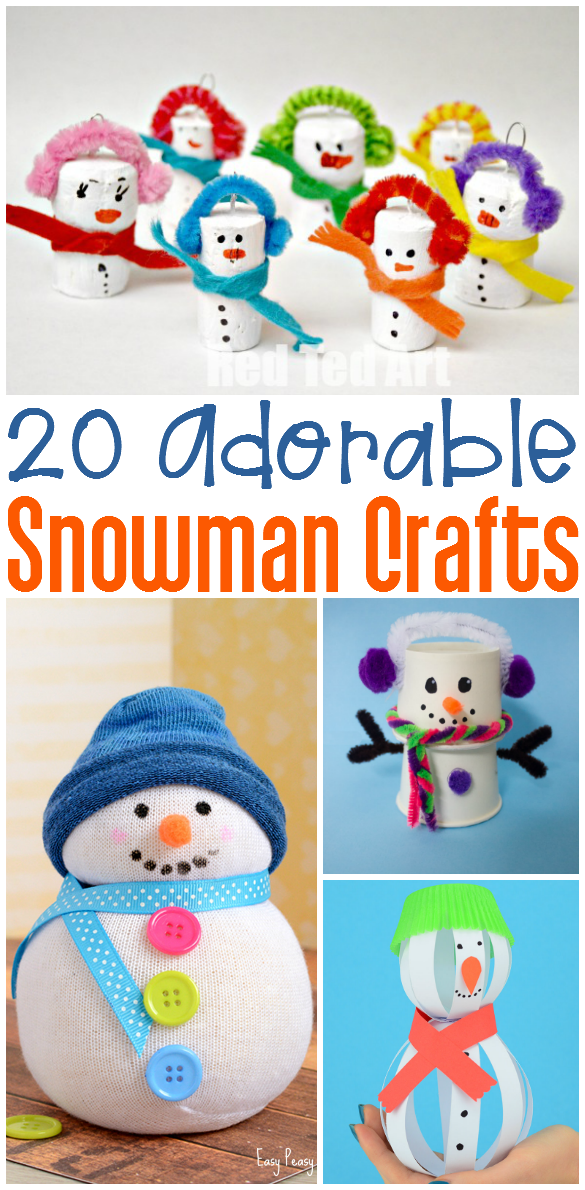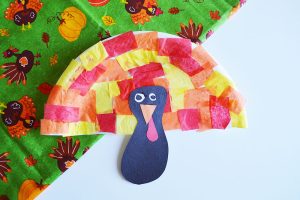
20 Snowman Crafts
Who wants to build a snowman? We do! This week we’ve rounded up some snowman crafts and activities. Each link contains a fun…
Babies are born with hands that are curled up and only reflexively grasp their caregiver’s finger. Through practice and play they quickly learn that their actions cause their toy to light up or their body to move around in space. The hands become stronger and their fine motor (small muscle) skills become more refined. Of course, we would not give a baby a pencil and ask him/her to write in cursive! The use of a crayon comes through practice holding other – more interesting items to baby like food and their bottle. Then comes big and chunky items like pegs and eventually we give crayons for scribbling on paper. My older son is over 21 and I still have his first scribble on paper!
It’s important to give babies lots of sensory and movement experiences to help build their muscles and make connections within their brains. Let them pick up all kinds of items so they can explore their surroundings.
Occupational therapists are often asked to help children to build fine motor skills in preparation for handwriting, buttoning, zipping, holding onto finger foods, and holding on to small items. However, a young toddler isn’t ready to tie shoes just yet. So, how do OTs work on critical skills?
Here are some ‘Out of the Pocket’ ideas used by OTs.
OTs encourage toys that have lights and sounds. For young toddlers, it’s important that their actions cause something fun to occur. When they press a button, there’s music or a sound. Toddlers quickly realize that THEY made that happen! This is a huge confidence booster.
OTs encourage stringing beads. Stringing beads is a fun activity that works on using BOTH hands together. Read our earlier post about bilateral coordination here. One hand is the ‘helper’ hand that holds the string and the other picks up the beads.
OTs recommend using smaller toys (being careful about choking risks). BINGO is a fun game. Most discount stores sell small fun-themed erasers. Use them as BINGO markers. Try using puzzles with small handles on them. Give them containers to open and close for practice using small hand muscles.
As kids grow and develop OTs add smaller items for kids to use during play. We might substitute painting with a Q-Tip instead of a larger paintbrush. This gives the child something to hold that will begin to build up the tripod grasp commonly used for writing. It’s my experience that when kids have a large pencil (much like the photo for this blog post), they will hold onto the entire pencil.
OTs recommend breaking crayons in half to give kids a smaller area on which to hold. This will more naturally cause their little hands to use a more mature grasp (grip) pattern.
One of the best ways to add pre-writing fun is by using play-based activities to work on motor skills. I love using q-tips for painting. Here’s a sample of our q-tip painting activity downloads
We have multiple different packs available here.
Finally, OTs advise caregivers NEVER to force handwriting. Kids learn best through fun games and activities they enjoy and prefer. Handwriting is often a weak area for kids with special needs due to muscle weakness, sensory processing trouble, visual skill issues, and with their thinking (cognitive) skills. When we are weak in an area, it tends to become an activity that’s NOT preferred. This is the critical importance of working on hand strengthening activities before writing.
Here’s another post to help with more pre-writing fun!
Looking for scissors tips? Read this post on cutting.



